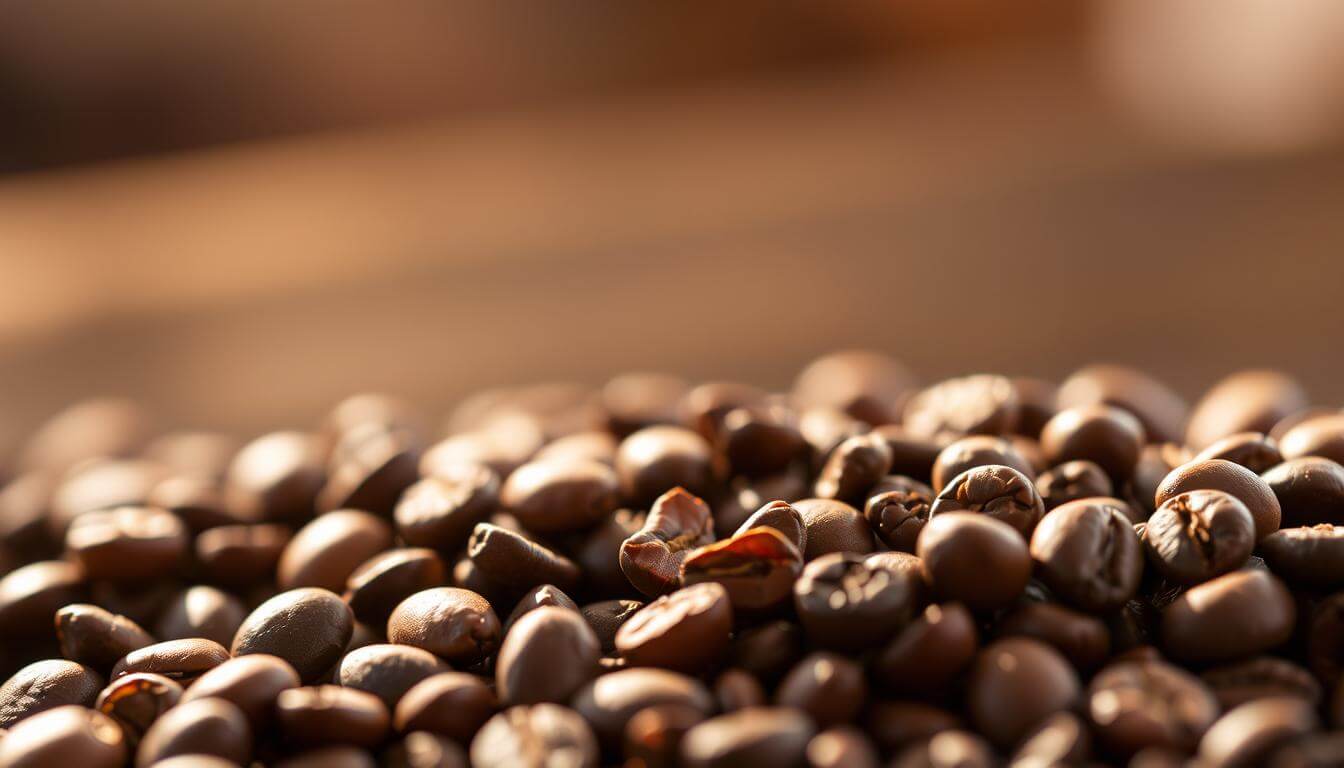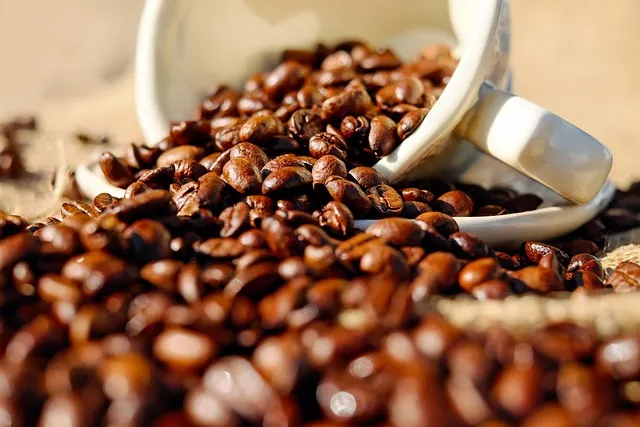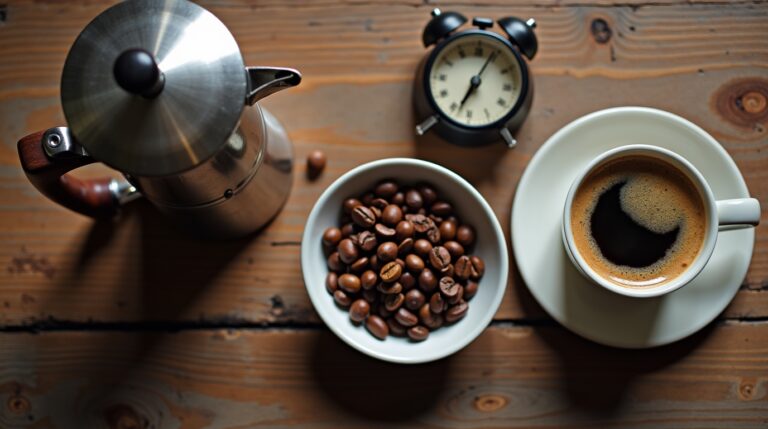Arabica coffee vs Robusta? Know Your Coffee
Coffee enthusiasts, rejoice! Whether you’re a casual fan or a connoisseur, understanding the nuances between Arabica and Robusta can elevate your daily cup. The world of coffee is vast and diverse, with a multitude of flavors and brewing methods to explore.

Arabica coffee vs Robusta
The debate between Arabica coffee vs Robusta centers around differences in taste, production, and quality. While Robusta is known for its bold flavor and higher caffeine content, Arabica is prized for its nuanced taste and aromatic qualities.
As we dive into the world of coffee, you’ll discover the unique characteristics of each type and how they cater to different tastes and brewing methods.
Key Takeaways
- Understand the main differences between Arabica and Robusta coffee beans.
- Discover how coffee taste varies between the two types.
- Learn about the production processes that impact coffee quality.
- Explore how different brewing methods can enhance your coffee experience.
- Find out which type of coffee suits your taste preferences.
The World of Coffee Beans: An Overview
As one of the most traded commodities, coffee has a far-reaching influence on global markets and local communities. With a rich history and diverse cultural significance, coffee is a drink that brings people together across the globe.
Coffee’s Global Impact
Coffee is a major player in the global economy, with millions of people involved in its production, processing, and trade. According to the International Coffee Organization, coffee is one of the most widely traded agricultural commodities. The global coffee industry has a significant impact on the economies of producing countries, supporting livelihoods and contributing to national incomes.
The global consumption of coffee is substantial, with over 2.25 billion cups consumed every day worldwide. This demand drives a multibillion-dollar industry that involves a complex network of farmers, traders, and retailers. Major coffee-consuming countries include the United States, Brazil, and European nations, where coffee culture is deeply ingrained.
The Two Major Players: Arabica and Robusta
The world’s coffee is primarily produced from two species of coffee beans: Arabica and Robusta. Arabica is known for its mild and nuanced flavor, accounting for around 60-70% of global coffee production. It is grown at high altitudes and is more sensitive to growing conditions. In contrast, Robusta is easier to grow, more disease-resistant, and has a bolder, harsher flavor. It is often used in instant coffee and espresso blends.
The distinction between Arabica and Robusta is crucial for coffee producers, traders, and consumers. The choice between these two beans affects the flavor, quality, and price of coffee. As the demand for specialty coffee grows, the preference for Arabica has increased due to its complex flavor profile and higher quality.
Arabica Coffee: The Delicate Favorite
The delicate flavor profile of Arabica coffee has made it a favorite among coffee connoisseurs worldwide. With a history that dates back centuries, Arabica has established itself as a premium coffee choice.
Origin and History
Arabica coffee originated in Ethiopia, where it was first cultivated over 1,000 years ago. Its historical significance is not just limited to its origin; it has been a major player in global coffee trade for centuries. The nuanced flavor and mild taste of Arabica have contributed to its popularity.
“Arabica coffee is known for its complex flavor profile, which includes notes of fruit, floral, and wine.” – Coffee Connoisseur
Growing Conditions and Regions
Arabica coffee requires specific growing conditions to thrive. It is typically grown at high altitudes, where the cooler temperatures and richer soil contribute to its distinct flavor.
Altitude Requirements
Arabica coffee plants are usually grown at altitudes between 1,500 and 2,200 meters above sea level. This high altitude is crucial for developing the coffee’s complex flavor profile. The slower maturation process at higher elevations allows for a more even ripening of the coffee cherries.
Major Growing Countries
Some of the major countries where Arabica is grown include Colombia, Ethiopia, Brazil, and Indonesia. These countries provide the ideal climate and altitude for Arabica cultivation. The top producers are known for their high-quality Arabica beans, which are sought after by coffee roasters worldwide.
- Colombia: Known for its balanced acidity and rich flavor.
- Ethiopia: Origin of Arabica, with a diverse range of heirloom varieties.
- Brazil: While primarily known for Arabica, Brazilian coffee is often used in blends.
- Indonesia: Produces high-quality Arabica, particularly from the Sumatra region.
Edit
Delete
Robusta Coffee: The Bold Contender
As a contender in the coffee world, Robusta has its own unique strengths. While Arabica may be the more popular choice among coffee connoisseurs, Robusta’s robustness and higher caffeine content make it a valuable component in many coffee blends.
Origin and History
Robusta coffee, scientifically known as Coffea canephora, has its origins in central and western Africa. It was first discovered in the Congo Basin in the late 19th century. Unlike Arabica, which is more sensitive to growing conditions, Robusta is easier to cultivate and more disease-resistant, making it a practical choice for many coffee farmers.
The history of Robusta coffee is closely tied to its use in instant coffee and espresso blends. Its bold flavor and higher caffeine content made it an attractive option for coffee manufacturers looking to create a stronger, more affordable product.
Growing Conditions and Regions
Robusta coffee is more adaptable to different climates and soil types compared to Arabica. It thrives in lower altitudes and is more resistant to pests and diseases, making it a hardy crop for regions where Arabica might struggle.
Climate Resilience
One of the key advantages of Robusta is its climate resilience. It can grow in a variety of conditions, from tropical lowlands to regions with higher temperatures. This resilience is crucial in the face of climate change, which is affecting coffee production worldwide. Robusta’s ability to withstand harsher conditions makes it an important crop for the future of coffee production.
Major Production Areas
The major producers of Robusta coffee include Vietnam, Brazil, and Indonesia. These countries have the ideal climate and conditions for Robusta cultivation. Vietnam, in particular, is the largest producer of Robusta, accounting for a significant portion of the world’s total Robusta production.
Robusta’s contribution to the global coffee supply is significant, not just in terms of quantity but also in its role in coffee blends. Its bold flavor and higher caffeine content make it a valuable component in many coffee products.
Arabica Coffee vs Robusta: Physical Differences
The physical differences between Arabica and Robusta coffee beans are not just about aesthetics; they hint at the distinct characteristics of each. One of the most noticeable differences lies in the beans themselves.
Bean Shape and Size
Arabica beans are generally larger and more elongated than Robusta beans. This difference in size and shape is due to the varying conditions under which these coffee plants are grown. Arabica beans tend to be more irregular in shape, which can be an indicator of their higher quality and more complex flavor profile. In contrast, Robusta beans are typically rounder and smaller.

Arabica vs Robusta coffee beans comparison
Plant Characteristics
The plants from which Arabica and Robusta beans are harvested also exhibit distinct characteristics. Arabica plants are typically taller and more sensitive to temperature and humidity, requiring more precise growing conditions. On the other hand, Robusta plants are hardier and more resilient, capable of thriving in a wider range of environments. This hardiness is one reason Robusta is often used as a base for instant coffee and espresso blends.
Understanding these physical differences can help coffee enthusiasts appreciate the unique qualities of each coffee type and make informed choices about their coffee preferences.
Taste Profile Comparison
The flavor profiles of Arabica and Robusta coffee beans are as different as night and day. While Arabica is celebrated for its nuanced and complex taste, Robusta is known for its bold and harsh flavor.
Arabica’s Flavor Spectrum
Arabica coffee is renowned for its delicate and refined flavor profile, which can include notes of fruit, floral, and wine. The acidity in Arabica is typically higher, contributing to its bright and vibrant taste.
Acidity and Sweetness
The acidity in Arabica coffee is often described as bright and snappy, with a sweetness that balances out the sharpness. This balance is a hallmark of high-quality Arabica.
Flavor Notes to Look For
When tasting Arabica, look for flavor notes such as citrus, berries, and honey. These notes are a result of the bean’s processing methods and the region in which it’s grown.
Robusta’s Distinctive Taste
In contrast, Robusta coffee has a bolder and more bitter taste, often described as harsh or burnt. The flavor profile is generally less complex than Arabica, with a heavier body.
Strength and Bitterness
Robusta is known for its strong and bitter taste, making it a popular choice for those who prefer a robust coffee. The bitterness is often accompanied by a burnt or rubbery flavor.
Characteristic Flavor Notes
The flavor notes in Robusta are typically earthy, nutty, and woody, with a lack of the acidity and sweetness found in Arabica. This makes Robusta a distinct choice for coffee drinkers.
To illustrate the differences, here’s a comparison table:
| Coffee Type | Flavor Profile | Acidity | Sweetness |
| Arabica | Fruit, Floral, Wine | High | Balanced |
| Robusta | Earthy, Nutty, Woody | Low | Low |
Caffeine Content and Chemical Composition
The distinct characteristics of Arabica and Robusta coffee beans are largely determined by their caffeine content and chemical composition. Understanding these differences is essential for appreciating the unique qualities of each coffee type.
Caffeine Levels Explained
Robusta coffee beans contain significantly more caffeine than Arabica, with Robusta having around 2.7% caffeine content compared to Arabica’s 1.5%. This difference in caffeine levels contributes to the distinct taste and effect of the two coffee types. Higher caffeine content in Robusta gives it a bitter taste and a more pronounced stimulating effect.
Other Chemical Differences
Beyond caffeine, Arabica and Robusta differ in their levels of oils, sugars, and antioxidants. These compounds play a crucial role in the flavor and potential health benefits of coffee.
Oils and Sugars
Arabica generally contains more sugars and lipids than Robusta, contributing to its smoother, more nuanced flavor profile. The higher sugar content in Arabica can caramelize during roasting, enhancing its flavor.
Antioxidant Content
Both Arabica and Robusta contain antioxidants, but Arabica tends to have higher levels. Antioxidants are important for their potential health benefits, including reducing inflammation and protecting against certain diseases.
The Art of Blending: When Arabica Meets Robusta
In the world of coffee, blending Arabica and Robusta is a common practice that aims to balance flavor and strength. Many commercial coffees are blends of these two beans, offering a compromise between taste and cost.
Why Blends Exist
Coffee blends exist for several reasons. Primarily, they allow producers to balance the flavor profile and strength of the coffee. Arabica brings a nuanced and complex flavor, while Robusta adds depth and a bolder taste. By combining the two, roasters can create a product that is both flavorful and affordable.
Blending also enables coffee producers to utilize the strengths of each bean. For instance, Robusta’s higher caffeine content can enhance the overall energy boost of the coffee, while Arabica’s acidity can add a brighter, more vibrant taste.
Popular Blend Ratios and Their Effects
The ratio of Arabica to Robusta in a blend can significantly affect the final product’s taste. Common blends range from 20% to 50% Robusta. A higher proportion of Arabica typically results in a more complex and nuanced flavor profile, while a higher proportion of Robusta can make the coffee bolder and more bitter.
Some popular blends include:
- Arabica-dominated blends (80-100% Arabica) for a nuanced flavor
- Balanced blends (50-70% Arabica) for a mix of flavor and strength
- Robusta-dominated blends (20-40% Arabica) for a bold and intense taste
Ultimately, the art of blending Arabica and Robusta is about finding the perfect balance that suits individual tastes. Whether you’re looking for a complex flavor profile or a bold cup, there’s a blend out there for you.
Processing Methods and Their Impact on Flavor
The processing of coffee beans plays a pivotal role in shaping the final flavor, with Arabica and Robusta undergoing different methods.
Coffee processing involves several techniques, including washed, dry, and honey processing, each influencing the flavor profile distinctively. The choice of processing method can accentuate or mute certain flavor characteristics inherent to the coffee bean variety.
Arabica Processing
Arabica is often processed using the washed method, which involves removing the skin and pulp of the coffee cherry before drying. This method contributes to Arabica’s bright acidity and nuanced flavor profile, highlighting notes of fruit and floral hints.
Robusta Processing
In contrast, Robusta is commonly processed using the dry method, where the coffee cherries are dried in their fruit. This method results in a bolder, harsher flavor with earthy and bitter notes, characteristic of Robusta.
The table below summarizes the key differences in processing methods and their impact on flavor:
| Coffee Type | Common Processing Method | Flavor Profile Impact |
| Arabica | Washed | Bright acidity, nuanced, fruity, and floral notes |
| Robusta | Dry | Bolder, harsher, earthy, and bitter notes |

coffee processing methods comparison
Understanding these processing methods and their effects on flavor can help coffee aficionados make informed choices between Arabica and Robusta, or blends thereof, to suit their taste preferences.
Market Share and Economics
Understanding the economic dynamics between Arabica and Robusta is crucial for stakeholders in the coffee industry. The global coffee market is influenced by the production volumes and pricing of these two species.
Global Production Statistics
The global coffee production is dominated by Arabica, which accounts for approximately 60-70% of the world’s total coffee production. Robusta, on the other hand, makes up the remaining 30-40%. According to recent statistics, the global coffee production has been steadily increasing, with Arabica production seeing a significant rise in regions such as South America.
| Coffee Type | Global Production Share | Average Annual Production (in million bags) |
| Arabica | 60-70% | 100-120 |
| Robusta | 30-40% | 50-70 |
Price Differences and Why They Exist
Arabica generally commands a higher price than Robusta due to its higher quality, more delicate flavor profile, and the more challenging growing conditions it requires. The price difference is also influenced by factors such as production costs, demand, and regional supply chain dynamics.
Arabica’s higher price is reflective of its superior quality and the labor-intensive process involved in its production. In contrast, Robusta is often used as a base for instant coffee and espresso blends, where its bolder flavor and higher caffeine content are valued.
The market share and economics of Arabica and Robusta coffee are closely tied to their production volumes, quality perceptions, and end-use applications. As the global demand for specialty coffee continues to grow, the economic dynamics between these two species are likely to evolve.
How to Choose Between Arabica and Robusta
Whether you’re a coffee aficionado or a casual drinker, selecting between Arabica and Robusta can elevate your brewing experience. The choice largely depends on your brewing method, personal taste preferences, and the type of coffee preparation you’re making.
For Home Brewing
For those who brew coffee at home, the decision between Arabica and Robusta can significantly impact the flavor and quality of your coffee. Arabica is often preferred for pour-over and drip brewing due to its nuanced flavor profile.
Brewing Methods That Highlight Each Type
Arabica’s complex flavors are best highlighted through pour-over, drip brewing, and French press methods. On the other hand, Robusta is commonly used in espresso blends due to its bold flavor and crema-enhancing properties.
- Arabica: Pour-over, Drip Brewing, French Press
- Robusta: Espresso Blends
Roast Levels and Their Effects
The roast level can also affect the taste of your coffee. Lighter roasts tend to preserve the coffee’s natural flavors, while darker roasts bring out deeper, richer flavors. Arabica generally benefits from lighter roasts, while Robusta can handle darker roasts.
| Coffee Type | Recommended Roast Level | Flavor Profile |
| Arabica | Light to Medium | Nuanced, with notes of fruit and floral hints |
| Robusta | Dark | Bitter, with a harsh aftertaste |
For Different Coffee Preparations
Different coffee preparations also call for different types of coffee beans. Understanding these differences can help you make an informed decision.
Espresso Considerations
For espresso, Robusta is often blended with Arabica to enhance the crema and add depth to the flavor. However, using 100% Arabica can result in a more refined and nuanced espresso experience.
Cold Brew Differences
Cold brew coffee, on the other hand, can be made with either Arabica or Robusta, but Arabica tends to produce a smoother, less bitter cold brew. The longer brewing time can bring out the best in Arabica’s flavor profile.
Conclusion
The world of coffee is rich and diverse, with Arabica and Robusta being the two main protagonists. Throughout this article, we’ve explored the distinct characteristics of these coffee beans, from their origin and growing conditions to their taste profiles and caffeine content.
Understanding the differences between Arabica coffee vs Robusta can elevate your coffee experience. Arabica’s delicate flavor and nuanced acidity offer a sophisticated taste, while Robusta’s bold and rich flavor provides a robust coffee experience.
Both types of coffee beans have their loyal followings, and there’s a place for each in the world of coffee. Whether you’re a seasoned coffee connoisseur or just starting to explore the world of coffee, appreciating the unique qualities of Arabica and Robusta can enhance your appreciation for this beloved beverage.
As you continue to explore the world of coffee, consider experimenting with different coffee taste profiles and blends. Discover the perfect balance that suits your palate, and enjoy the rich diversity that coffee has to offer.
FAQ
What is the main difference between Arabica and Robusta coffee?
The main difference lies in their taste profiles, with Arabica being known for its nuanced and acidic taste, while Robusta is often described as bitter and harsh.
Which type of coffee is more expensive, Arabica or Robusta?
Arabica is generally more expensive than Robusta due to its higher quality and more demanding growing conditions.
What are the typical brewing methods for Arabica and Robusta?
Arabica is often preferred for pour-over and drip brewing, while Robusta is commonly used in espresso blends.
How do the processing methods affect the flavor of Arabica and Robusta?
The processing methods, such as washed, dry, and honey processing, can significantly impact the final flavor of both Arabica and Robusta coffees.
What is the difference in caffeine content between Arabica and Robusta?
Robusta contains more caffeine than Arabica, making it a popular choice for those seeking a bolder coffee.
Can Arabica and Robusta be blended together?
Yes, many commercial coffees are blends of Arabica and Robusta, offering a balance between taste and cost.
What are the health implications of consuming Arabica vs Robusta?
Both Arabica and Robusta have different levels of antioxidants and sugars, and their health implications vary, with caffeine content being a significant factor to consider.
How do the growing conditions for Arabica and Robusta differ?
Arabica requires more specific and demanding growing conditions, including higher altitudes, whereas Robusta is more resilient and can be grown in a variety of conditions.
What are the major producing countries for Arabica and Robusta?
Arabica is primarily produced in countries like Ethiopia, Colombia, and Brazil, while Robusta is mainly produced in countries like Vietnam and Indonesia.




